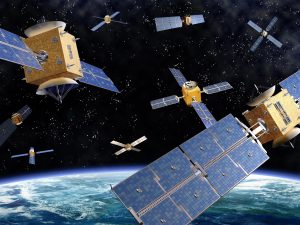There is good news and bad news in North Korea’s successful November 21, 2023 launch of Malligyong-1, a military optical reconnaissance satellite. The good news is that this technological success gave North Korean dictator Kim Jong Un the opportunity to abandon reunification of the Korean peninsula as a regime goal, a concession made in a typically bellicose speech on December 31, 2023. The bad news is that space offers North Korea new opportunities to engage in more diplomacy provocation cycle gaming.
Giving up on the reunification fantasy matters because Pyongyang’s nationalist project has been the central theme of the regime’s legitimacy since it was founded. Successes in space will be substituted for national territory unlikely ever to be gained; an act of ideological sublimation comparable to that of Nikita Khrushchev bragging that the Soviet Union’s Sputnik-1 satellite was both first and larger than the United States’s Explorer 1. So pleased was Kim with the Malligyong-1 that three more spy satellites were promised, together with more nuclear weapons and drones.
Beyond reaching orbit, two previous launch attempts having failed earlier in the year, North Korea’s satellite is nothing special. Russian technical assistance was probably necessary, and the spacecraft has generated no images that were not already supplied by Russia or China. Still, bragging rights are what matters most for public consumption inside North Korea.
Outside North Korea, what matters is threat performance. As in the early days of the Cold War between the United States and Soviet Union, satellite launches were inextricably linked with or ballistic nuclear missiles. Which explains the triumphalism in a sarcastic, ad hominem laden foreign policy speech by Kim Yo Jong, the supreme leader’s only trusted sibling and chief lieutenant, on January 1. North Korea’s leaders are clearly very excited about space.
Given that North Korea is unlikely to be planning a suicidal nuclear attack on South Korea, Japan and the United States, what more do satellites offer the regime? The answer is that space is a new realm to engage in its strategy of extracting diplomatic or economic concessions from the United States and South Korea in what observers term a provocation-diplomacy cycle. Like an aggressive panhandler, North Korea uses physical intimidation and menacing language to win payoffs from wealthier democratic countries that prefer peace to perpetual crisis.
Low Earth Orbit (LEO) will tempt North Korea because it is becoming congested, as the number and sophistication of small satellites increases and as their individual expense and size shrinks. Once the domain of only a handful of countries, 70 countries now operate satellites. Estonia, Sri Lanka, and Sudan have small satellites. The constellations of hundreds of small communications satellites in the range of 150 kg to 300 kg, like those of StarLink and OpenWeb, are just the beginning. Rwanda has filed an application with the International Telecommunications Union to operate 130,000 small satellites. Microsatellites of less than 100 kg down to nanosatellites of 1-10 kg are already a reality. Yoctosatellies of less than 100 mg are conceivable.
Orbital crowding in LEO will invite covert action in the form of “soft” attacks by small satellites that appear to perform legitimate functions, but actually obstructing optical reconnaissance, jamming signals collection, conducting cyberattacks hijacking spacecraft telemetry and tracking, and spoofing global positioning. Spoofing substitutes inaccurate or accurate data, compromising the air navigation and precision-guided weapons targeting that global positioning satellites perform.
Old fashioned sabotage by collision is also an option. The thousands of functioning satellites travelling at more than 27,000 kilometers per hour now in LEO will be joined by tens of thousands more in coming years. All will be subject to extremes of temperature and radiation, and at risk of strikes by micrometeorites or the estimated 130 million pieces of space trash larger than 1 millimeter that humans have left behind. Violence made to appear as accidents is part of the skill set for creative practitioners of covert action. The realm between the Earth’s atmosphere and the next 2,000 kilometers of space is an ideal environment for these dark arts.
Once demonstrated, covert action in Low Earth Orbit will inevitably tempt other counties. Credible scenarios include conflict dyads such as Russia and Ukraine, Israel and Iran, and China and the Philippines, targeting one another’s satellites.
The solution to the problem may be found in the technological change giving rise to the problem. The United States has already shown the way forward with smaller, less expensive, and more numerous civilian communication satellites. Similarly transforming its fleets of military reconnaissance and global positioning satellites would enhance national security through redundancy.

































